For the first blink this small size annual polypore might look like Turkeytails (Trametes versicolor) to many, but once you see the underside, the distinct gills makes it clear what have you found.
Home / Mushroom Guide /
Birch Mazegill
Birch Mazegill
| Mushroom Type | |
| Common Names |
Birch Mazegill, Tegyll Rhwyllog y Bedw (CY), Blaszkowiec Drobnozarodnikowy (PL), Fakó Lemezestapló (HU) |
| Scientific Name |
Trametes betulina |
| Synonyms |
Lenzites betulinus |
| Season Start |
All |
| Season End |
All |
| Average Mushroom height (CM) | |
| Average Cap width (CM) |
2–8 |
Please note that each and every mushroom you come across may vary in appearance to these photos.
Fruiting Body
2–8 cm across, rarely even a bit larger, fan-shaped, irregularly semi-circular, or even rosette-like, usually in tiered groups. Margin mostly off-white or buff. Its skin is faintly hairy (tomentose), velvety, with concentric creamy grey to grey-brown zones, or covered by algae with age.
Pores
Despite being a polypore mushroom, its hymenium is lamellate (it has gills), not poroid. The gills are radially arranged, widely spaced (1–2 per mm at the margin), off-white to buff, often forking towards the margin, tough.
Habitat
On dead hardwood logs, large stumps or fallen branches of mostly Birch, Oak and Beech, occasionally on other hardwoods too. Saprotrophic, causes white-rot.
Possible Confusion
Trametes warnieri, syn: Cellulariella warnieri, is much larger than Birch Mazegill (Trametes betulina), also the edge of its gills is blackening with age. It prefers warmer temperature, and growing mostly on Poplar, Walnut, Black Locust (Robinia pseudoacacia) or Oak.
Turkeytail (Trametes versicolor), pictured, has white pore surface with tiny, circular to angular pores (3–5 per mm).
Hairy Bracket (Trametes hirsuta) has white pore surface with larger circular to angular pores (1–6 per mm).
Spore Print
Spore print is white. Spores are colourless (hyaline), smooth and thin walled, cylindrical (sausage-like), and inamyloid (which proves there is no starch in the spore wall).
Taste / Smell
Inedible. Taste and smell not distinctive.
Frequency
Occasional and widespread in the British Isles.
Other Facts
According to Liu Bo’s Medicinal Mushrooms of China (1974), it was used in Traditional Chinese Medicine for treating rheumatic pain, or as it as phrased, it can ‘chases [out] Wind, dispels Cold, relaxes the muscles and strengthens the veins.’


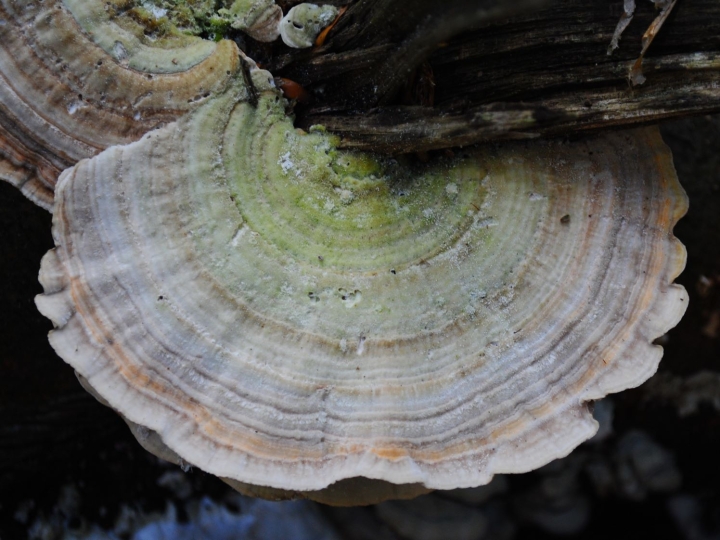
















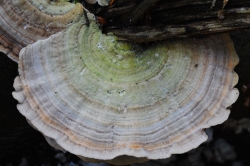
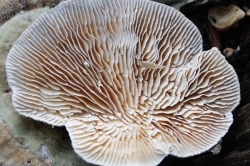
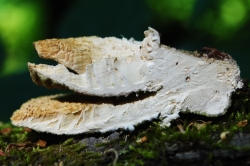
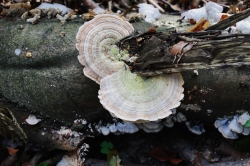
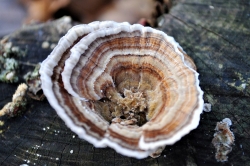






Leave a Reply